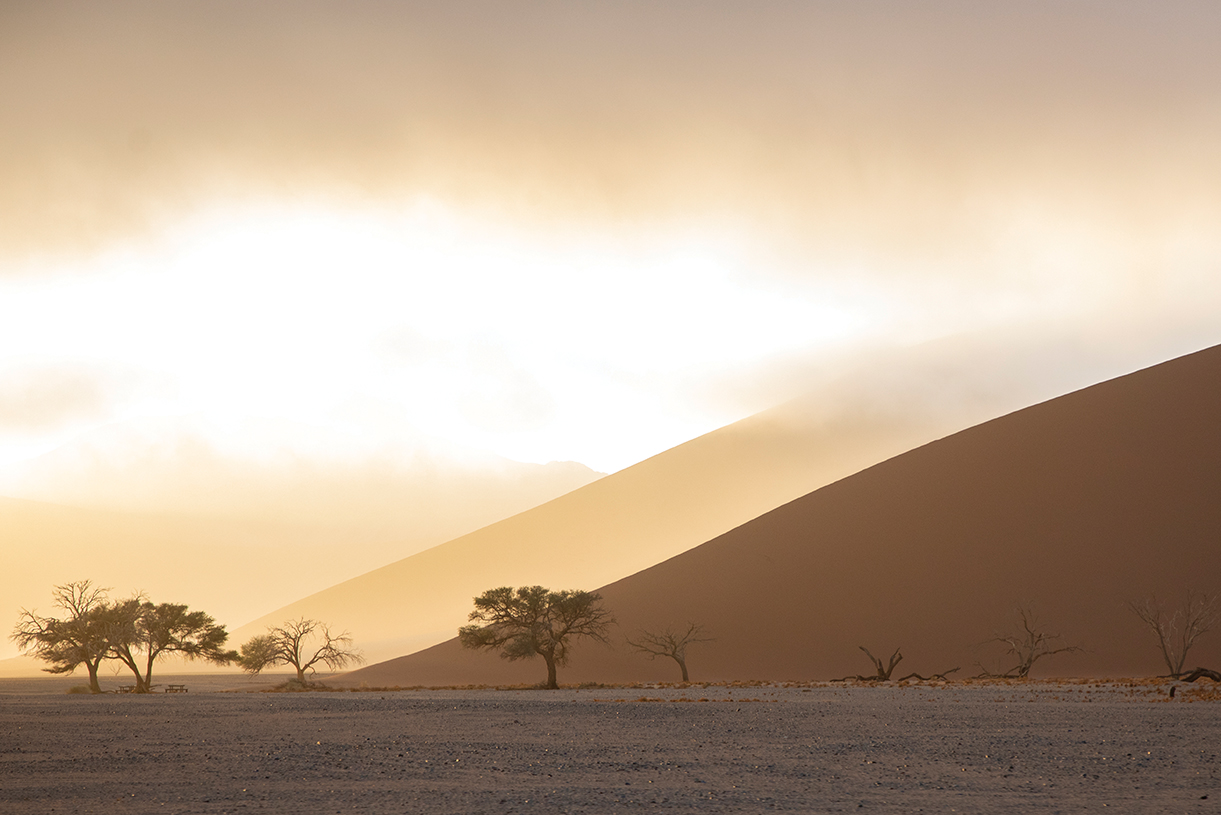
Safari Among the Dunes In Namibia
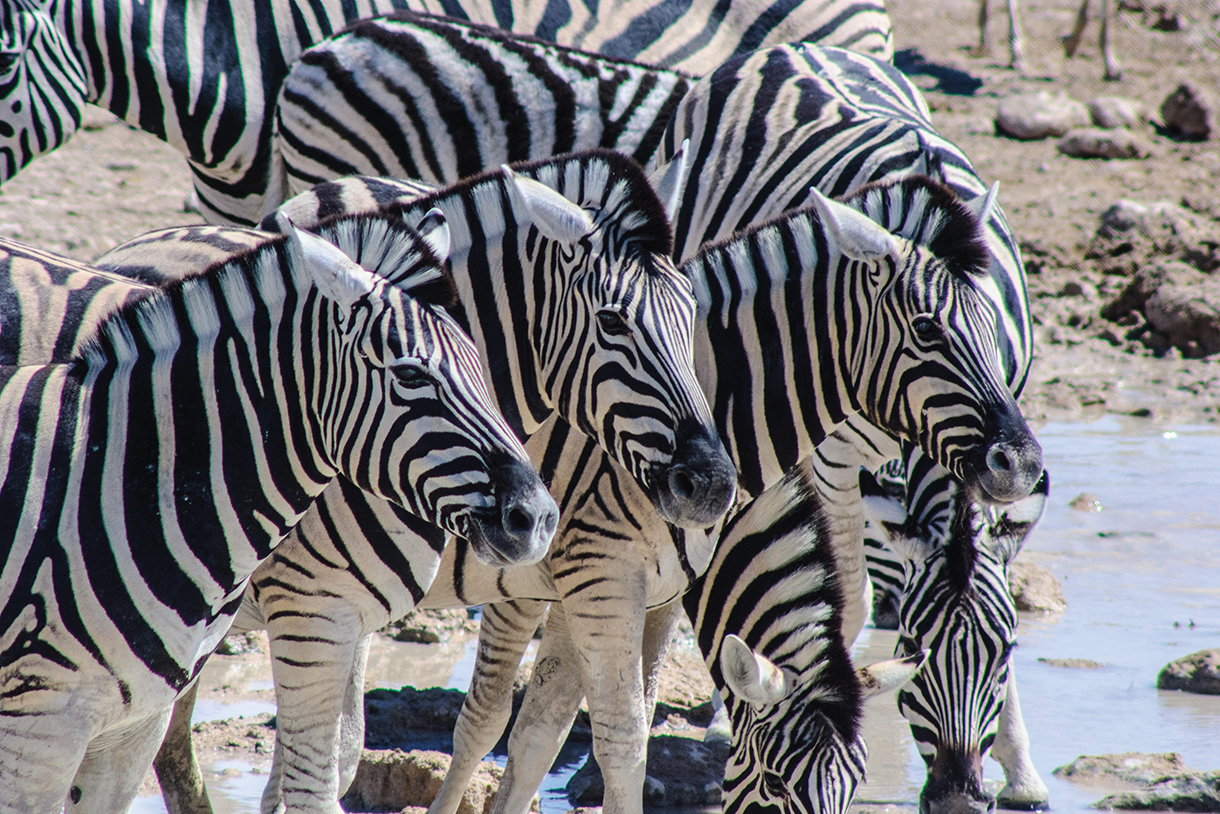

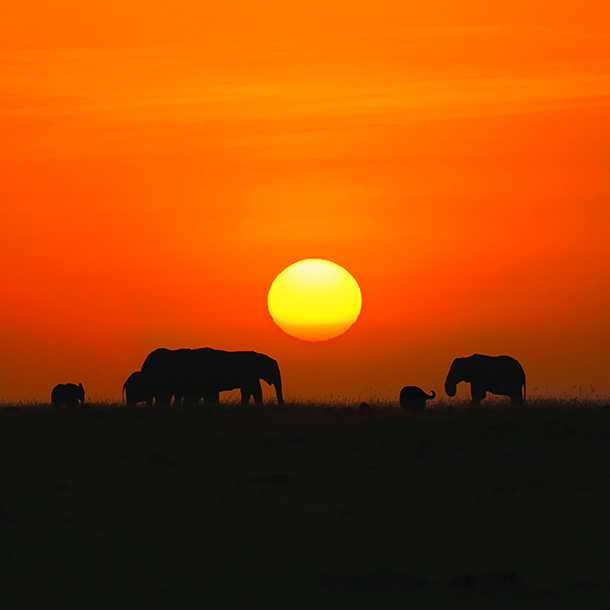
Namibia’s Uniqueness
Almost everyone experiences their first African wildlife safari by visiting either East Africa (Kenya and Tanzania) or South Africa, and then returning home with one compelling question: Where to go next?
The hot answer right now is Namibia.
“You can go to any safari lodge in Africa and see elephants and giraffes, but you can only see desert-adapted elephants, black rhino, and giraffes here,” says Orlando Haraseb, longtime senior naturalist guide at Ultimate Safaris, the operator of high-end safari lodge Onduli Ridge. “Namibia is only 32 years old since independence, and we are the first and only country in Africa with the protection of the environment written into our constitution. There are very detailed rules on development, most of the desert is protected, and all of the primary natural assets from the minerals in the ground to the tallest branches of the trees are owned by the government—as is every black rhino. Protected conservation areas total over 40 percent of the country, and there are a lot of plants, animals, birds, and insects that can be found in Namibia and no place else on Earth. We are unique in tourism because we are unique in nature.”
Haraseb is right. Namibia is a land of superlatives, where just about every facet comes with an -est attached—biggest, oldest, tallest, driest, and so on. The third-least-densely populated country on the planet (behind Greenland and Mongolia), it is larger than Texas with fewer people than Brooklyn (2.5 million). Visitors enjoy the same kind of jaw-dropping game viewing available elsewhere in Africa, but also see many unequaled sights and ecosystems.
The most common description by first-time visitors is that it is like visiting another planet. At the end of every day, the night skies are a stunning reminder that there is something very special almost everywhere you look—up from the ground, down from a plane or helicopter, out from a safari vehicle, or all around you on foot. The flora, fauna, sand, and even the rock itself speak to visitors in a way that will always be remembered.
“We get a lot of repeat customers, people who have traveled with us four, five, or six times, who visit Africa and then want to come back with their friends or kids or grandkids,” said Alan Petersen, lead safari director and one of the most veteran guides for Micato Safaris, the choice of travelers including Natalie Portman, Hillary Clinton, and Warren Buffett.
Based in Johannesburg, Petersen has covered all Southern African safari destinations for more than 30 years. “Especially after the first time, people still want to see amazing wildlife, but they also want to experience more of what makes Africa so unique. South Africa has the wine country, golf, and Cape Town. Zambia and Zimbabwe have Victoria Falls. Botswana has always been popular because of all the water and the Okavango Delta. But in recent years Namibia has just exploded, because the tourism infrastructure has gotten so much better, new lodges like Onduli Ridge and the Sossusvlei Desert Lodge, which have a lot of extra activities beyond game viewing. The new lodges are attracting more of our customers, but they come for the things that have always been special in Namibia—the desert, the wildlife, the dunes, the Skeleton Coast, the landscape.”
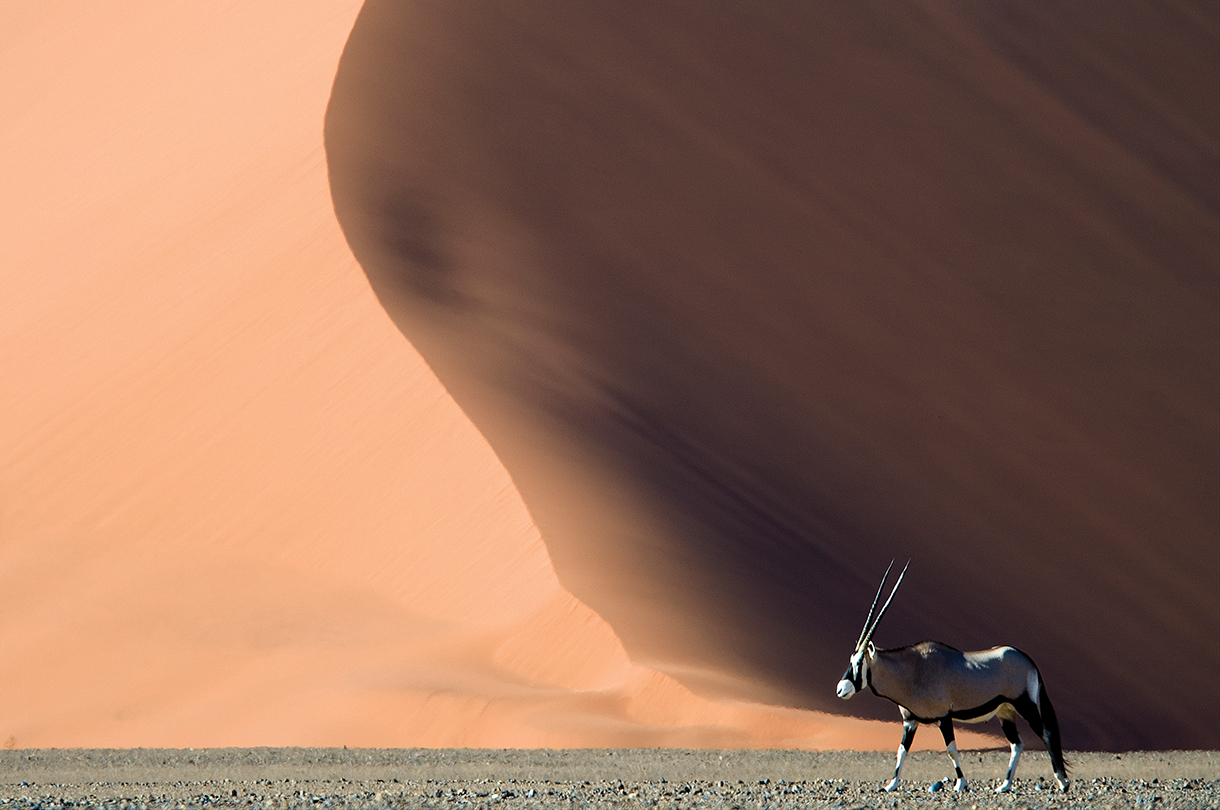
Oryx antelope
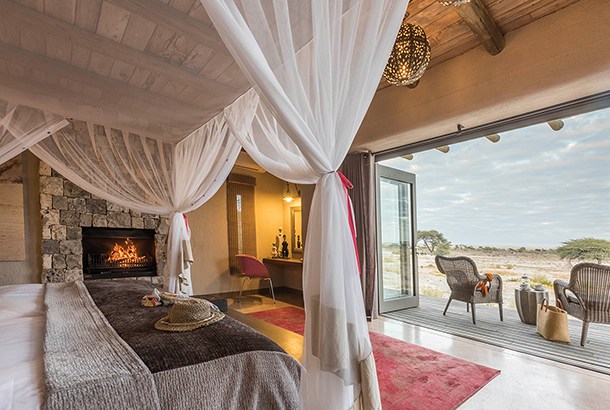
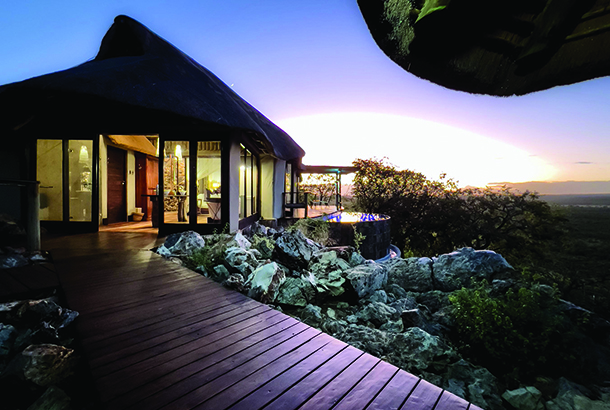
Desert-Adapted Wildlife
Like South Africa’s smaller Kruger, Etosha National Park (the sixth largest in Africa) is ringed with private game reserves offering the best of all worlds, park access, and private land, with luxury accommodations. The best here is 85,000-acre Onguma Safari Camps (onguma.com), encompassing a traditional tented camp, a bush camp, and the unique Onguma - The Fort—the top-tier offering in the form of a Moorish-style castle surrounded by a dozen private villas. Private reserve Little Ongava (ongava.com) remains quite exclusive with just three swank suites and 74,000 acres. Etosha, Onguma, and Ongava each have all the animals people go to Africa to see, from big cats (lions, leopard, and cheetah) to rhinos, giraffes, elephants, zebra, and all kinds of antelope, along with more than 300 species of birds.
In terms of wildlife, a big distinction here is the manner in which certain animals have evolved due to the dry, hot climate, as Namibia is the driest place in sub-Saharan Africa. You will see plenty of action during the day, but due to the heat, animals that are purely diurnal everywhere else have become active after dark here, making night drives spectacular (typically not allowed in National Parks, but common practice within private game reserve lodges, including Onguma and Ongava).
The national symbol is the oryx, an antelope whose body temperature can reach over 100 degrees Fahrenheit and survive, thanks to its unique ability to cool the blood flowing to its brain. More obvious to the naked eye are the desert-adapted lions, leaner than their peers elsewhere, but with thicker coats for the cool nights and the unique ability to survive without drinking, as they get all the moisture needed from their prey. Likewise for the desert-adapted Hoanib giraffes, who get sufficient water from the leaves they eat. One researcher said that in five years in Namibia he never saw one drink, while these creatures are regulars at watering holes across the rest of Africa. Also observable to visitors is their lighter color, thought to aid camouflage in the local setting.
Desert-adapted elephants are smaller bodied but have longer legs and trunks and visibly wider feet for traversing sand. It’s a common myth that elephants never sleep laying down, one perpetrated by the rarity of such sightings, because they only do it when they feel completely safe. In the open desert, they can see a long way in every direction, so you are likely to witness this state of utter relaxation (which most African safari-goers never see). Desert black rhinos are among Africa’s most endangered animals, and are larger than other black rhinos, with longer horns and larger feet as well. The cheetah here are no different from those in the rest of Africa, but the quality of sightings is much better and more memorable. The fastest land animals on earth, these predators can reach up to 80 mph, and the main event is to see them in action, running full speed and showing off their blazing acceleration. But such sights are virtually impossible in thick bush, or even tall grass, while the stark desert sets a perfect backdrop.
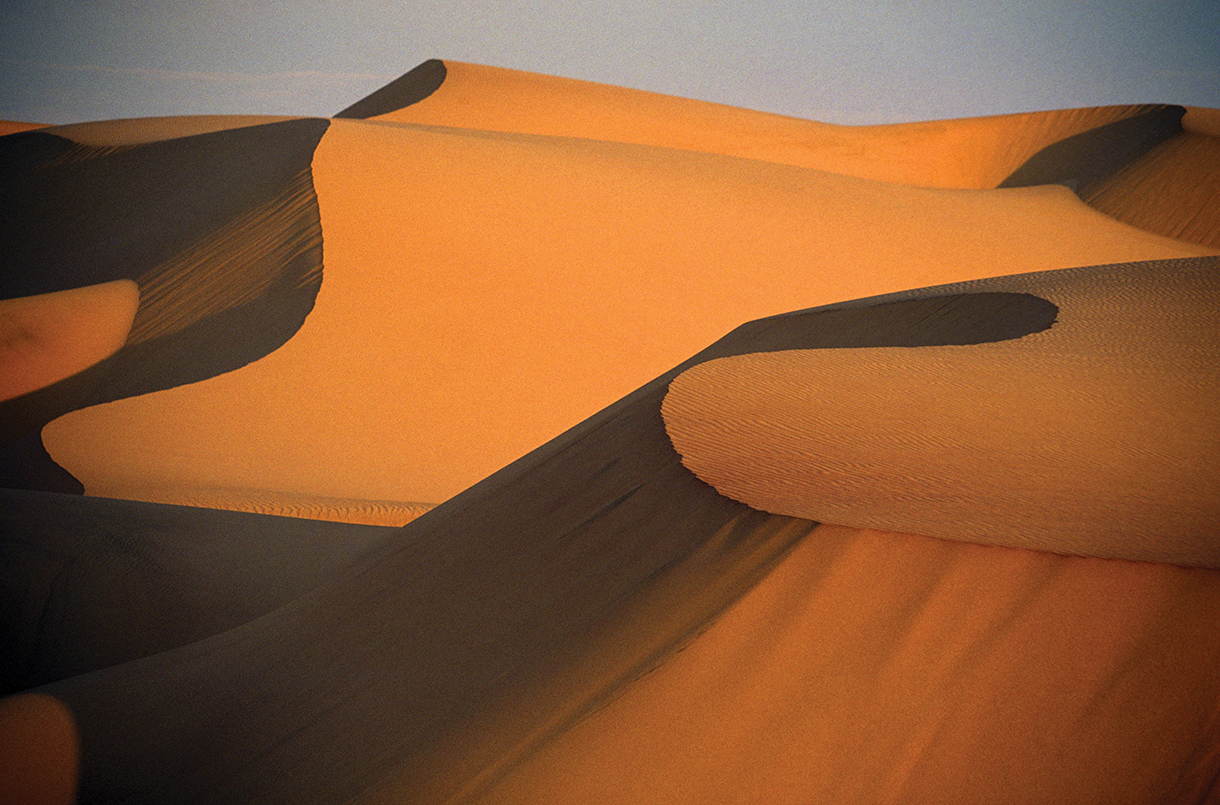
Otherworldly Landscapes
While the wildlife viewing can be spectacular, Namibia’s big tourism ace in the hole is its unique and incredibly varied landscapes. The Namib desert is the world’s oldest, estimated to be 55 million years old. It is located within Namib-Naukluft National Park, which is technically the largest game reserve in all of Africa. But it’s less famous for wildlife than for its incredible scenery—a landscape of rolling red sand dunes, including some of the world’s highest.
An area in the park known as Sossusvlei (meaning “the land that time forgot”) is for many the country’s unforgettable highlight. Here a series of dunes as big as mountains tower above stark, white, flat salt pans, randomly dotted with gnarled, twisted, and distinctive 900-year-old blackened trees that are dead but so dried out as to be perfectly preserved. A photographer’s wonderland, the area is a cross between a post-apocalyptic landscape and Lord of the Rings movie set. The single biggest attraction in Sossusvlei is the exceptional and unique experience of hiking up one of the huge dunes, something visitors come in droves to do.
From the entrance gate to the Sossusvlei area, the dunes stretch for nearly 40 miles on either side of the main park road, and most are named for their distance in kilometers from the gate, with huge Dune 45 said to be the most photographed. It is also a relatively easy ascent, given that the loose sand, heat, and total lack of protection from the sun make the hikes much more difficult than their length and altitude gains would suggest. The top prize, the Everest of the Namib, is named Big Daddy, and it’s the highest dune in the park at over 1,000 feet. While challenging, it is quite attainable, and the reasonably fit make it up in just under an hour. Besides panoramic views over the dunes, including the adjacent and just slightly shorter Big Mama, the payoff is the descent down the backside, followed by the crossing of a jaw-dropping, tree-strewn salt pan. Just about everyone who comes to Sossusvlei tries their hand at summiting one of the dunes, and fortunately there are options for every ability.
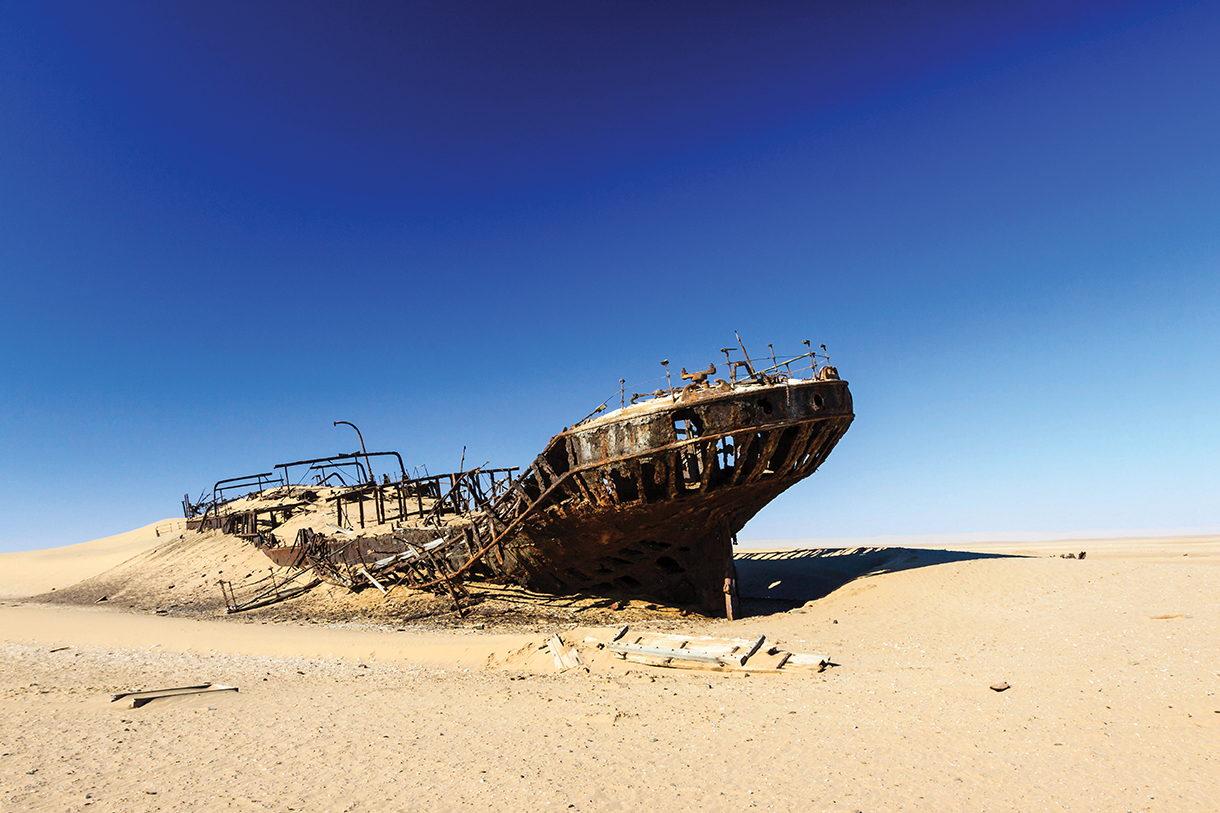
Skeleton Coast
The 300 unforgiving miles of harsh shoreline on the Skeleton Coast were called “The Gates of Hell” by Portuguese sailors. The combination of high winds, strong currents, and rocky seaboard have long made it extremely treacherous, and as a result, there are hundreds of shipwrecks of all sizes strewn across the region, sunken or sinking into the sands and dating as far back as 1530. Some, such as the 310-foot Eduard Bohlen or the 510-foot Dunedin Star, are so big as to have become tourist attractions easily visible from the air, with flightseeing trips popular here. But the best way to get up close and personal with the rusting hulks dotting the region is on a 4x4 tour. As a bonus, the Skeleton Coast is also dotted with huge seal colonies, where hundreds can be seen at once, which makes it popular with desert-adapted lions who come to prey on the seals, while elephants wander the coastline to beat the heat with ocean swims.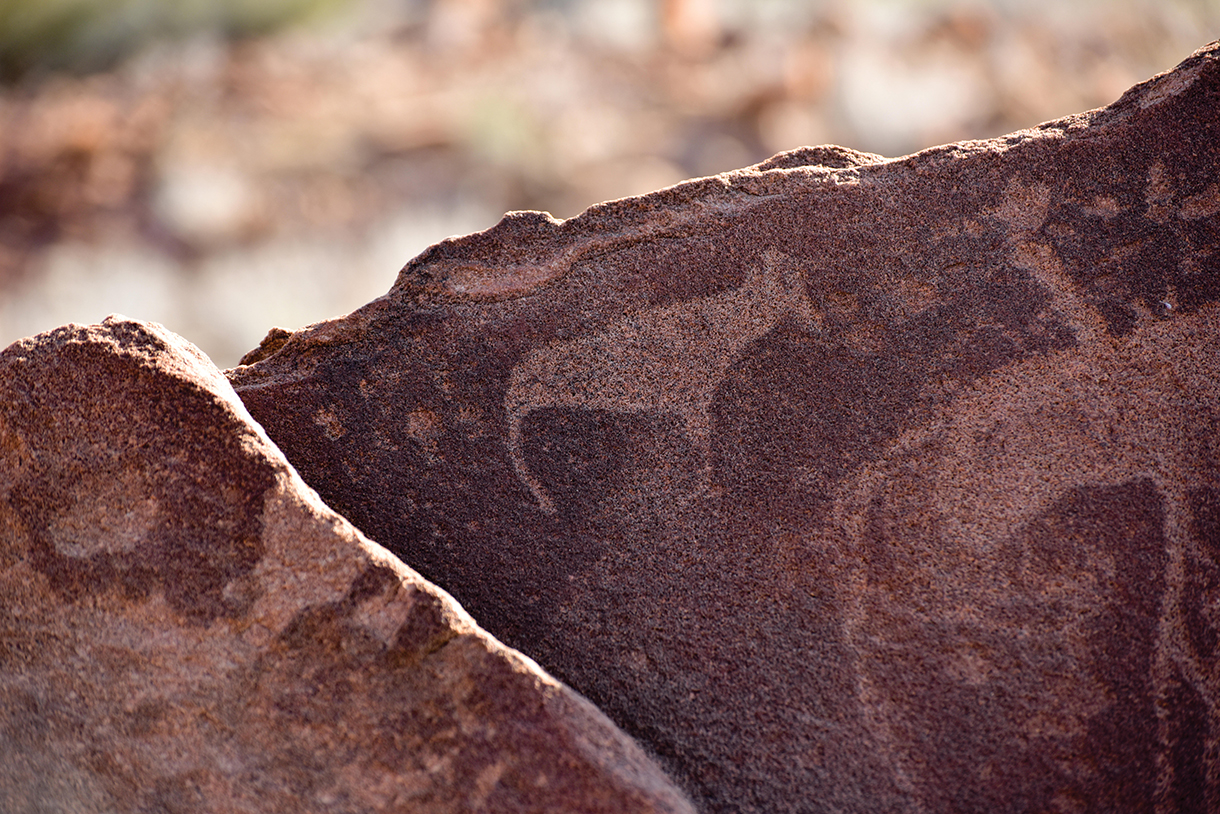
Petroglyphs
Damaraland is a harsh desert landscape set among the high mountains that separate the Skeleton Coast from the country’s interior, an area especially rich in desert-adapted wildlife. In addition, it is home to the some 6,000-year-old Twyfelfontein petroglyphs. This, one of only two UNESCO World Heritage Sites in Namibia, is a very extensive set of rock engravings that depict travel away from and returning to the area by bushmen, recounting watering holes and animals they had seen, suggesting trips as far off as the remote coast. A series of pathways, stairs, and bridges runs through the boulder pile of a site, which has more than 2,500 carvings and paintings on over 200 different boulders and rock slabs, the largest such collection in Africa. It is a must-see and well worth the two hours or so it takes for a guided excursion. Twyfelfontein is usually combined with a visit to the nearby Organ Pipes, a mind-boggling geological formation of towering basalt columns. Around 150 million years ago, lava seeped into a slate rock formation and erosion left only the columns, which now resemble the pipes of a giant outdoor organ. Damaraland has several luxury lodges: Onduli Ridge (ultimatesafaris.na), Hoanib Valley Camp (theluxurysafaricompany.com), and three andBeyond partner properties, Damaraland Camp (wilderness-safaris.com), Mowani Mountain Camp (chiwani.com), and Desert Rhino Camp (wilderness-safaris.com).
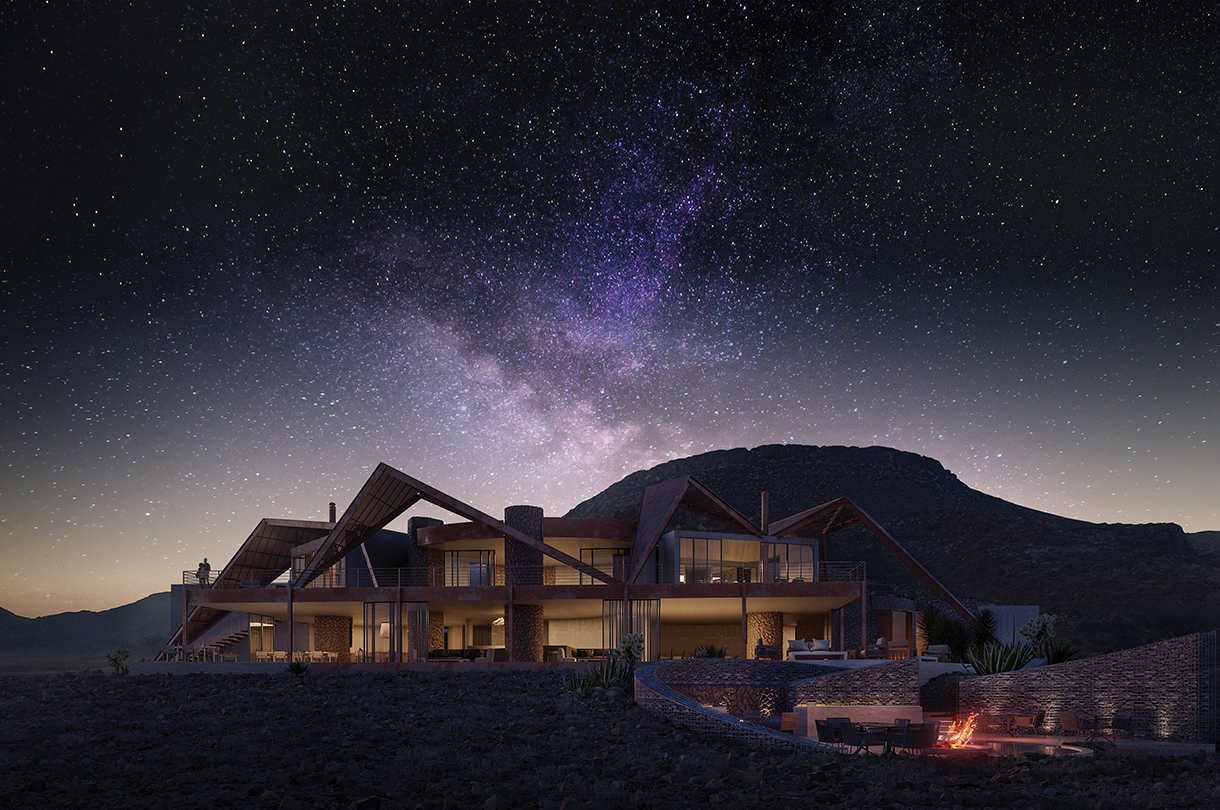
Getting To Namibia
Windhoek is the capital and has the sole international airport in Namibia, and most visitors arrive on a connection via South Africa, with nonstops from Cape Town and Johannesburg. This allows the option to combine Namibia with South African safaris, golf games, winery visits, city tours, and beach days. But the best way to travel from the United States is on Qatar Airways (the fastest routing), which flies one-stop from several US gateways to Doha and then directly to Windhoek. Qatar also wins World’s Best Business Class just about every year with its unique and private Qsuite cabins and its lounge in Doha also is usually ranked the World’s Best.
Windhoek is clean and safe but largely forgettable, and if flight timing allows, it is best to transfer directly to the bush flight to your lodge and onward to much more interesting adventures. If you do need to overnight, the top choices are The Weinberg (gondwana-collection.com), a boutique spa hotel in the city, or Zannier Hotels Omaanda (zannierhotels.com), a luxury safari lodge and private game reserve about 30 minutes from the airport.
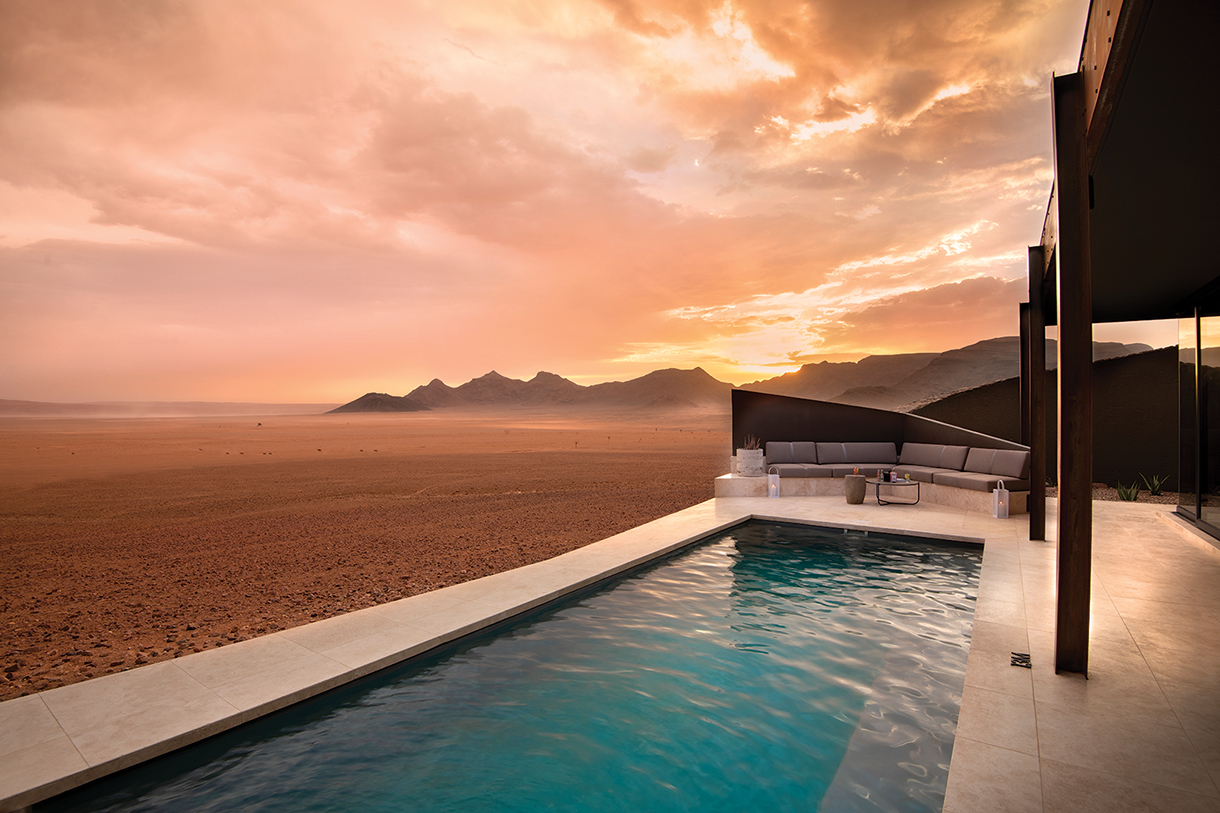
Where to Stay in Namibia
The top lodges are Onguma - The Fort and Little Ongava for traditional wildlife safari viewing and access to Etosha National Park; Sossusvlei Desert Lodge (andbeyond.com) for exploring the dunes and Namib-Naukluft National Park; and Onduli Ridge, Damaraland Camp, Mowani Mountain Camp, Desert Rhino Camp and Hoanib Valley Camp, a joint venture between local communities and the Giraffe Conservation Foundation, for desert-adapted wildlife viewing.
Sossusvlei Desert Lodge is a flagship for andBeyond, one of the top luxury safari lodge operators with properties across Africa and now South America as well. It combines luxury accommodations in 10 individual modern, stone-and-glass, air-conditioned suites boasting private pools with easy access to Big Daddy and the other dunes. The property includes its own well-hidden collection of petroglyphs in a small cave-like recess, easily accessible on guided walks. Other on-site activities include purpose-built trails for e-mountain biking, so you can get some fresh air while exploring the desert landscape around the lodge, hiking, guided quad buggy (ATV) tours, a helipad for flightseeing, and world-class stargazing. The lodge sits within an International Dark Sky Reserve and has a staff astronomer and powerful telescopes for nightly guided astronomical viewings, while the suites all have retractable skylights so you can view the night sky from bed.
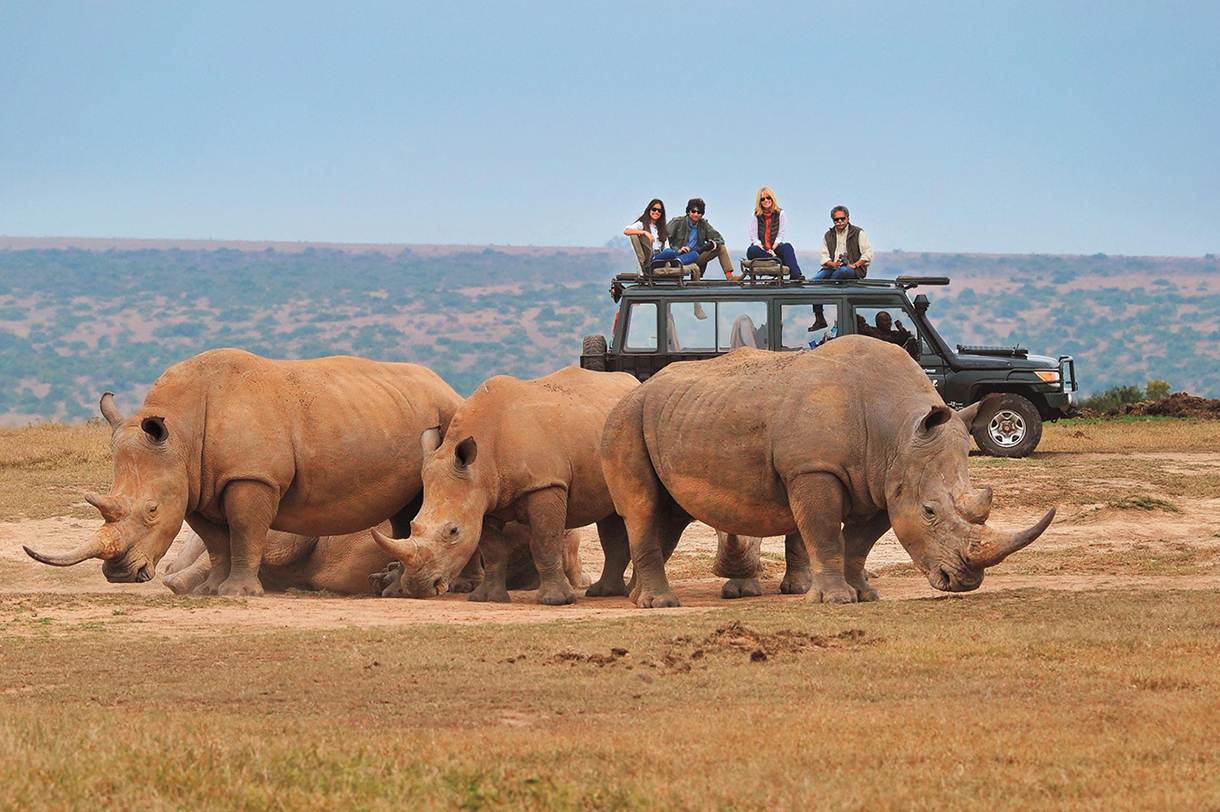
Micato Safaris
While the hospitality infrastructure has improved greatly in recent years, there are far fewer top-tier, high-end luxury lodges than in other South African countries, and accommodations should be chosen carefully. One potential pitfall is that there has been a wave of architecturally impressive, high-design properties, especially in the Skeleton Coast, which have gotten a lot of favorable press and images in travel publications because they are so distinctive, but that disappoint US travelers because they offer little to do and no game viewing, built more as monuments to themselves. The best lodges are also linked by chartered small planes, making the entire process logistically difficult to self-book.
Instead, either use a quality travel agent/advisor or a top-tier safari specialty tour operator. With dedicated offices in New York, Kenya, and South Africa, Micato Safaris (micato.com) has been excelling at this for over 55 years, is the most awarded such company in the world, and was one of the first to start promoting travel to Namibia, with its own full-time excellent guides rather than subcontractors, and strong local connections.




